2,3-BIS(4-HYDROXYPHENYL)-PROPIONITRILE
Synonym(s):Diarylpropionitrile;DPN;SC-4473
- CAS NO.:1428-67-7
- Empirical Formula: C15H13NO2
- Molecular Weight: 239.27
- MDL number: MFCD01695412
- SAFETY DATA SHEET (SDS)
- Update Date: 2024-11-19 23:02:33

What is 2,3-BIS(4-HYDROXYPHENYL)-PROPIONITRILE?
Description
DPN (1428-67-7) is a potent estrogen ERβ receptor agonist. Displays a 70-fold selectivity over ERα, EC50 = 0.85 and 66 nM, respectively.1 Regulates expression of GluR1, 2 and 3 in rat hippocampus.2 Ameliorates portal hypertension in a carbon tetrachloride-induced liver cirrhosis rat model.3 Stimulates proliferation of androgen-independent prostate cancer cell line PC-3 via a novel pathway involving ERβ-mediated activation of β-catenin.4 A useful tool for elucidating the biological function of ERβ.5
The Uses of 2,3-BIS(4-HYDROXYPHENYL)-PROPIONITRILE
2,3-Bis(4-hydroxyphenyl)propionitrile is an estrogen receptor β and α specific with pro- and anti-nociceptive actions in mice.
What are the applications of Application
DPN is a highly potent ERβ agonist
Definition
ChEBI: A nitrile that is acetonitrile in which one of the hydrogens is replaced by a 4-hydroxyphenyl group while a second hydrogen is replaced by a 4-hydroxybenzyl group. It is a specific agonist for estrogen receptor beta (ERbeta).
Biological Activity
Highly potent estrogen ER β receptor agonist with a 70-fold selectivity over ER α (EC 50 values are 0.85 and 66 nM respectively). Relaxes mesenteric arteries in vitro .
Biochem/physiol Actions
2,3-Bis(4-hydroxyphenyl)-propionitrile (Diarylprepionitrile, DPN) is an ERβ-selective agonist; IC50 = 15nM. DPN protects WT and ARKO mice and significantly decreases IL-1β following LPS treatment in young adult-derived microglia. PPT (Cat. No.H6036, ERa agonist) enhances cell proliferation, while DPN inhibits it. PPT increases Bcl-2 expression, while DPN decreases it. DPN also elevates Bax expression. DPN induces a dose-dependent increase on vitellogenin synthesis. PPT and DPN are effective in dynamically, but differentially regulating intracellular calcium signaling in hippocampal neurons. DPN is more efficacious than PPT in potentiating a physiological concentration of glutamate-induced intracellular Ca2+ rise in these neurons. DPN prevents the development of prostatic hyperplasia and inflammation in testosterone-treated LuRKO mice.
storage
-20°C (desiccate)
References
1) Meyers et al. (2001), Estrogen receptor-beta potency-selective ligands: structure-activity relationship studies of diarylpropionitriles and their acetylene and polar analogues; J. Med. Chem., 44 4230 2) Waters et al. (2009), Estrogen receptor alpha and beta specific agonists regulate expression of synaptic proteins in rat hippocampus; Brain Res., 1290 1 3) Zhang et al. (2016), Role of estrogen receptor beta selective agonist in ameliorating portal hypertension in rats with CC14-induced liver cirrhosis; World J. Gastroenterol., 22 4484 4) Lombardi et al. (2016), Estrogen receptor beta (ERβ) mediates expression of β-catenin and proliferation in prostate cancer cell line PC-3; Mol. Cell. Endocrin. 430 12 5) Harrington et al. (2003), Activities of estrogen receptor alpha- and beta-selective ligands at diverse estrogen responsive gene sites mediating transactivation and transrepression; Mol. Cell. Endocrinol., 206 13
Properties of 2,3-BIS(4-HYDROXYPHENYL)-PROPIONITRILE
| Melting point: | 200.0 to 204.0 °C |
| Boiling point: | 449.4±35.0 °C(Predicted) |
| Density | 1.256±0.06 g/cm3(Predicted) |
| RTECS | UG0900000 |
| storage temp. | -20°C |
| solubility | DMSO: soluble10mg/mL, clear |
| form | powder |
| pka | 9.41±0.26(Predicted) |
| color | white to beige |
| Water Solubility | Soluble in 1eq. NaOH (30 mM), ethanol (100 mM), DMSO (100 mM), DMF (~30 mg/ml), and water (0.5 mg/ml at 25°C). |
| Stability: | Stable for 1 year from date of purchase as supplied. Solutions in DMSO or ethanol may be stored at -20°C for up to 1 month. |
Safety information for 2,3-BIS(4-HYDROXYPHENYL)-PROPIONITRILE
| Signal word | Warning |
| Pictogram(s) |
 Exclamation Mark Irritant GHS07  Environment GHS09 |
| GHS Hazard Statements |
H319:Serious eye damage/eye irritation H400:Hazardous to the aquatic environment, acute hazard |
| Precautionary Statement Codes |
P273:Avoid release to the environment. P305+P351+P338:IF IN EYES: Rinse cautiously with water for several minutes. Remove contact lenses, if present and easy to do. Continuerinsing. |
Computed Descriptors for 2,3-BIS(4-HYDROXYPHENYL)-PROPIONITRILE
New Products
4-AMINO-TETRAHYDRO-PYRAN-4-CARBOXYLIC ACID HCL 4-(Dimethylamino)tetrahydro-2H-pyran-4-carbonitrile 4-Aminotetrahydropyran-4-carbonitrile Hydrochloride (R)-3-Aminobutanenitrile Hydrochloride 3-((Dimethylamino)methyl)-5-methylhexan-2-one oxalate 1,4-Dioxa-8-azaspiro[4.5]decane 5-Bromo-2-nitropyridine Nimesulide BP Aceclofenac IP/BP/EP Diclofenac Sodium IP/BP/EP/USP Mefenamic Acid IP/BP/EP/USP Ornidazole IP Diclofenac Potassium THOMAIND PAPER PH 2.0 TO 4.5 1 BOX BUFFER CAPSULE PH 9.2 - 10 CAP SODIUM CHLORIDE 0.1N CVS ALLOXAN MONOHYDRATE 98% PLATINUM 0.5% ON 3 MM ALUMINA PELLETS (TYPE 73) LITHIUM AAS SOLUTION 2-Bromo-1-(bromomethyl)-3-chloro-5-nitrobenzene 2-Bromo-3-nitroaniline N-(3-Hydroxypropyl)-N-methylacetamide 3-Bromo-6-chloropyridazine 4-ethyl-3-nitrobenzoic acidRelated products of tetrahydrofuran
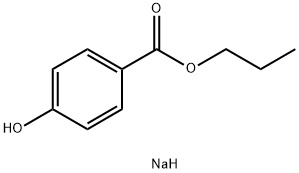

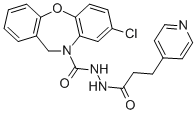
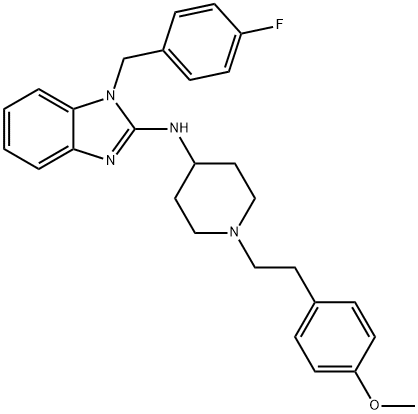
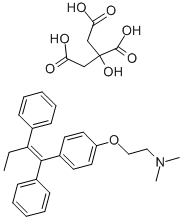

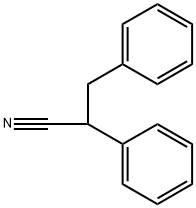
You may like
-
 Diarylpropionitrile CAS 1428-67-7View Details
Diarylpropionitrile CAS 1428-67-7View Details
1428-67-7 -
 2,3-Bis(4-hydroxyphenyl)propionitrile CAS 1428-67-7View Details
2,3-Bis(4-hydroxyphenyl)propionitrile CAS 1428-67-7View Details
1428-67-7 -
 1823368-42-8 98%View Details
1823368-42-8 98%View Details
1823368-42-8 -
 2-(3-(tert-butyl)phenoxy)-2-methylpropanoic acid 1307449-08-6 98%View Details
2-(3-(tert-butyl)phenoxy)-2-methylpropanoic acid 1307449-08-6 98%View Details
1307449-08-6 -
 Ethyl 3-(furan-2-yl)-3-hydroxypropanoate 25408-95-1 98%View Details
Ethyl 3-(furan-2-yl)-3-hydroxypropanoate 25408-95-1 98%View Details
25408-95-1 -
 2-Chloro-5-fluoro-1-methoxy-3-methylbenzene 98%View Details
2-Chloro-5-fluoro-1-methoxy-3-methylbenzene 98%View Details
1805639-70-6 -
 1784294-80-9 98%View Details
1784294-80-9 98%View Details
1784294-80-9 -
 Lithium ClavulanateView Details
Lithium ClavulanateView Details
61177-44-4